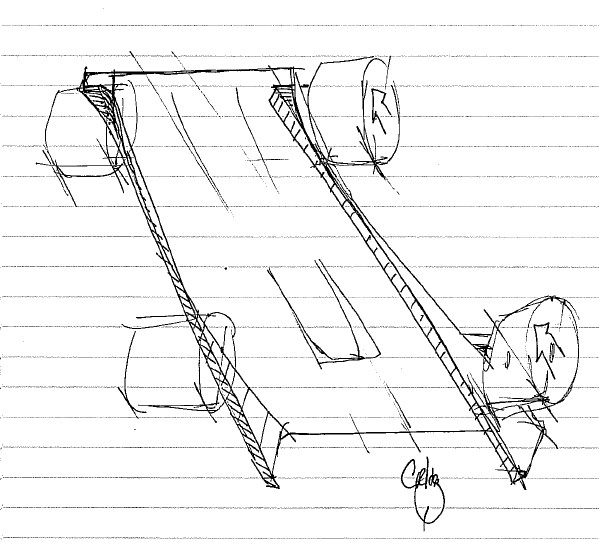mep wrote:Yes possible. I was wondering what those levers are for. But if you look at the picture showing the front of the car, left and right side looks asymmetric. Anyway, this means they just have 1 anti-roll bar in the centre of the car, which does not really allow having different adjustments between front and rear. What I read out of the pictures is that they have an absolutely rigid suspension unit connecting all for wheels. The chassis (driver, engine, gearbox) is sprung relative to that. Seriously, I doubt that is the idea of having a suspension on a vehicle. They could as well have just placed the driver on a pillow to feel more comfortable and have anything rigid else rigid. The tires are not able to follow road disturbances individually. Load transfer is not ideal; neither is camber changing during cornering. I even think a conventional design would be lighter. Connecting the ARB in the middle of the floor means the floor has to be very stiff. Also this beam structure connecting left and right wheels looks very heavy.
The point of connecting the floor to the wheels directly is that the springs don’t need to carry the high aero loads and thus can be lighter. But a Formula Student car is not quick enough to generate enough downforce to have any advantage of this.
Even if I am a bit harsh with that idea, I think we should have more topics like that on this forum.
I think. that what you see from the front are two different levers.
on the RHS ( in direction of the cars heading) you see, IMHO, the connection/droop link of the central ARB, while the lever you see on the LHS and in the side view picture, seems to be the shift linkage. But I could be wrong.
with a central ARB, you could still adjust/tune roll couple/LLTD by choosing the point where the droop link attaches to the
floor/undertray. I think, that is what they are doing, but again I could be wrong, it's just a possibility which IMO would work.
I don't think, that the undertray is very stiff in twist/torsion/wrap, that will allow the front and rear axle to assume a twisted/wraped position towards each other. Think of it as a torsional spring.
Now by connecting the central ARB more towards one axle, you will increase the rate of this torsional spring in regard to the axle which is closer ( like changing the length of a ARB for a given diameter).
Looking at the brackets attached to the floor, to me it looks like, that they allow for different mounting positions (backwards/forwards). This would, IMHO, be a option to alter the LLTD.
Using only one ARB would reduce the part count and thereby weight/mass and friction. Another small "advantage" would/could be, that you keep your overall roll stiffness (roll rate) constant, while you can alter/change the distribution by moving the attachment point of the droop link on the floor/undertray in longitudinal direction.
Most solutions employing two ARB's will not only change the LLTD, they change also the overall roll stiffness ( e.g. that happens if you only stiffen/soften one ARB at a time)
if their is an advantage of a beam axle, then it is good camber control. Why you can't have camber gain with this design (in roll) you also don't lose camber in roll in the first place. I would see that as one of the upsides of this concept.
From an aero point of view, it's not only that you don't need to pass the aero loads through the suspension, and therefor could run softer, you also have more or less constant ride height & angle of attack for your undertray ( ignoring tyre squash for a moment)
I agree wholeheartly with your last point mep
I think you will find some ideas of this concept in the mentioned car.
http://es.scribd.com/doc/49358553/balanced-suspension
to make this idea/concept work





